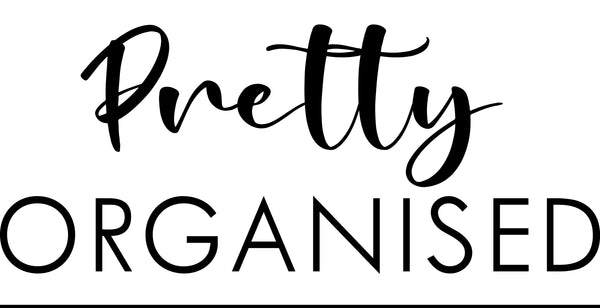The Smart Way to Organise Your Kitchen: Where Everything Should Go (and Why)
Share
An organised kitchen doesn’t just look beautiful — it works beautifully.
When everything has a logical home, you spend less time searching and more time enjoying the space.
Here’s your ultimate guide to setting up your kitchen layout so it feels calm, functional, and perfectly suited to everyday life — with plenty of handy hacks to make it even easier.
Think in Zones, Not Cupboards
The best kitchens are designed around how you use the space, not just where the cupboards are. Divide your kitchen into five key zones:
Prep Zone – where you chop, mix, and prepare food (usually near the sink or main bench).
Cook Zone – where the magic happens: stovetop, oven, and microwave.
Clean Zone – the sink, dishwasher, bins, and cleaning products.
Store Zone – pantry, fridge, and food storage.
Serve Zone – plates, bowls, glassware, and cutlery for table setting.
Tip: Walk through how you use your kitchen — from making coffee in the morning to packing school lunches. The areas you naturally move between will show you where each zone should be.
Map It Out: Where to Store What
Here’s a simple layout that works for most kitchens:
Cutlery & Utensils
Keep cutlery drawers close to the dishwasher or sink for easy unloading.
Everyday utensils (spatulas, tongs, ladles) belong near the stovetop or prep area — in a drawer or benchtop utensil holder.
Plates, Bowls & Glasses
Store plates and bowls near the dishwasher or sink, ideally in upper cupboards for quick access when setting the table. Glasses can go in this area too or near the fridge or drink station if space allows. Wine glasses are better in higher less used cupboards.
Cookware (Pots & Pans)
Place pots and pans in lower drawers or cupboards close to the stovetop.
If space allows, use deep drawers with dividers for lids and handles, or a pan rack to prevent stacking chaos.
Bakeware & Mixing Bowls
Keep baking trays, cake tins, and muffin pans near the oven.
Store mixing bowls, measuring cups, and baking utensils in the same zone for easy access when inspiration strikes. Nest mixing bowls and measuring spoons inside one another to save space.
Serveware & Entertaining Pieces
These don’t need prime real estate.
Store them higher up or in a less-frequented cupboard, grouped by type — platters, salad bowls, jugs, etc.
For large families or entertainers, consider a dedicated “hosting shelf” for table linens, serving boards, and special-occasion dishes.
Plastic Containers & Lids
Dedicate one drawer or cupboard for containers, ideally near the fridge or pantry.
Use drawer dividers or small bins to keep lids separate and sorted by size.
Tip: Stack containers with lids on if you have space — it saves rummaging time.
Food Wraps, Foil & Baking Paper
Store these in a drawer close to your prep area.
Tips for a Functional Flow
Keep frequently used items within arm’s reach. Think mugs by the kettle, chopping boards near the sink, and cooking oils beside the stove.
Store heavy items low, light items high. It’s safer and easier to access.
Maximise vertical space with shelf risers and turntables.
Declutter regularly. If you haven't used a gadget or dish in a year, it's time to let it go.
Aim for one-touch access. If you have to move three things to reach one, it's time to rethink your setup.
Final Thought
Your kitchen should work for you, not against you.
Start with zones, be intentional about placement, and adjust as your routines change.
Once everything has a home, keeping your kitchen tidy becomes effortless — and you’ll never have to hunt for the tongs again.
